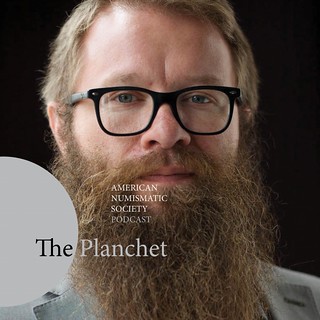
PREV ARTICLE
NEXT ARTICLE
FULL ISSUE
PREV FULL ISSUE
PODCAST REVIEW: THE COINAGE ACT OF 18571858 was a monumental year for American numismatics for more than just the introduction of the small cent. Along with the old large cents the Coinage Act of 1857 ended the circulation of foreign coinage as legal tender. In this article republished with permission from the April 2020 E-Gobrecht (a publication of the Liberty Seated Collectors Club), Len Augsburger reviews the first episode of The Planchet podcast from the ANS. -Editor
Andrew Reinhard, ANS Publications Director, hosts the podcast, and the first interviewee is Jesse Kraft, assistant curator of American coinage at ANS. Kraft recently completed his PhD studies at the University of Delaware, and his doctoral thesis focused on American circulation coinage prior to 1857. Many of the coins in the U.S. came from Mexico, part of the Spanish empire at the time, and English, French, Portuguese, and German coinage was seen as well. But the Mexican coinage was the most prominent, especially the silver eight reales or "pieces of eight." Any commercial transaction might involve a bit of arithmetic, as exchange rates for all of these currencies varied over time. Exchange charts were common, and people were forced to become adept at making the necessary calculations. This was nothing new and was even worse with the use of paper money, which tended to devalue more than "hard" money. Eighteenth century arithmetic books are highly focused on exercises related to these conversions. The difficulty of constant conversion is best illustrated in modern times by the United Kingdom conversion from fractional (pounds / shilling / pence) to decimal coinage in 1971, which caused more than a bit of irritation among those used to the "old ways." The coins in America followed immigration patterns – if the Germans and Irish were coming to the U.S. in large numbers in the 1830s and 1840s, their money came with them, and so the mix of circulating money was by no means constant. The flow of foreign coinage into New York was such that a U.S. Mint was considered for that city, but this never came to fruition. As foreign coins came into the U.S., much of it was recoined, and this was the basis of the U.S. Mint collection, today held by the Smithsonian. Adam Eckfeldt, U.S. Mint coiner, and others had the pleasure of cherrypicking choice specimens for nothing more than melt value as depositors brought in gold and silver for conversion to U.S. coinage. Of all foreign currency, Spanish American silver remained the most popular and was accepted throughout the world, so much so that the Spanish eight reales coin was used as the basis for the U.S. silver dollar. Interestingly, the acceptance of Spanish coinage changed as colonial Spanish states became independent in the 19th century – without the mother country behind the weight and content of the coinage, people distrusted the product of the new republics. The Act of 1857 also changed the copper standard for the cent, marking the transition from large to small cents. This greatly simplified one's coin purse – and the result was a more uniform and standardized set of coins. This also worked against the counterfeiters – it was easier to slip a bad coin into circulation when the variety of circulation coinage was extensive, and people were not able to carefully scrutinize so many different coins. A typical coin purse of the 1840s might contain English halfpennies, worn Spanish silver, coins cut in halves or quarters, and perhaps a few "clipped" pieces, which could be relatively valued depending on how much of the coin remained. Counterfeits were an ever present danger, and counterfeiters were incentivized by the bullion value of silver and gold coinage – something not seen in modern times, as counterfeiters now focus on paper money. If you want to understand a bit more about the coins circulating in America during this period, you will do well to stream or download this 50-minute podcast, which may be accessed at http://numismatics.org/planchet/01-01/ . For more information on the Liberty Seated Collectors Club, see:
To read the earlier E-Sylum article, see:
Wayne Homren, Editor The Numismatic Bibliomania Society is a non-profit organization promoting numismatic literature. See our web site at coinbooks.org. To submit items for publication in The E-Sylum, write to the Editor at this address: whomren@gmail.com To subscribe go to: https://my.binhost.com/lists/listinfo/esylum All Rights Reserved. NBS Home Page Contact the NBS webmaster 
|
